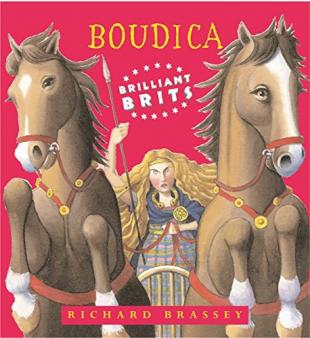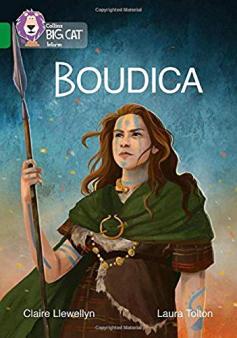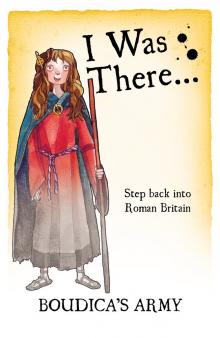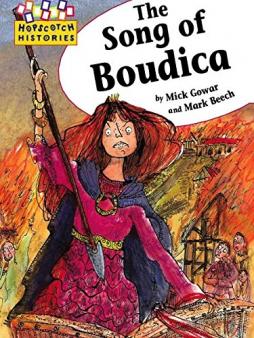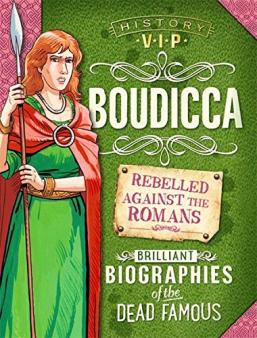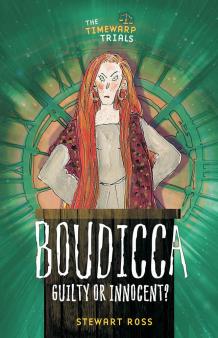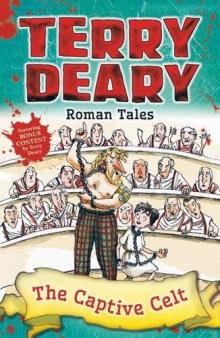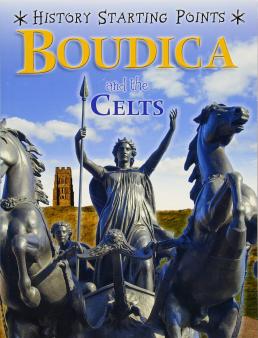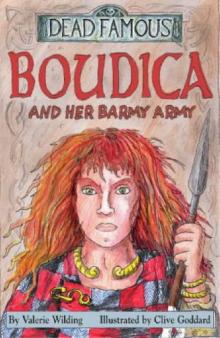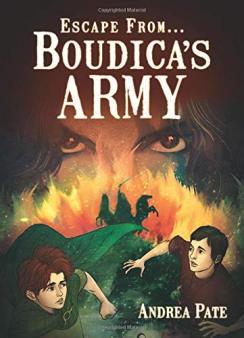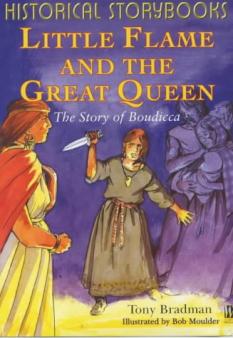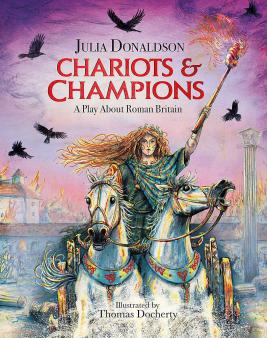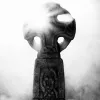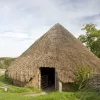Boudica

Top 10 facts
- Boudica was a member of the Iceni tribe who lived in Norfolk. The Iceni were initially on good terms with the Romans who had invaded Britain in 43 AD.
- Boudica was married to King Prasutagus and they had two daughters.
- Under Roman Law Boudica, as a woman, had no right to inherit her husband’s property. Prasutagus hoped to safeguard Boudica’s position by voluntarily leaving half of his property to the Emperor Nero.
- In 59 or 60 AD Prasutgas died. When Boudica attempted to defy the Romans who had come to seize her property, they had her beaten and attacked her daughters.
- Boudica joined forces with the neighbouring tribe of the Trinovantes to avenge this humiliation.
- Boudica and her army first attacked Roman Colchester (Camulodunum) destroying the hated Temple of Claudius and killing all the inhabitants.
- The Roman Governor and experienced commander of the XIV legion, Gaius Seutonius Paulinus, was in North Wales fighting the Druids when news of the rebellion reached him.
- The Romans sent the IX legion of 4,000 men to confront the rebels but they were ambushed and only those on horses were able to escape.
- The rebels then attacked London (Londinium) and St Albans (Verulamium), burning the Roman cities to the ground and killing their inhabitants mercilessly.
- The rebels were finally defeated by Paulinus in 61 AD. Paulinus chose the site of the battle well and even though the Romans were massively outnumbered their superior weaponry and training enabled them to inflict a crushing defeat on the Britons.
Boudica Timeline
- c25-30 ADBirth of Boudica
- 43 ADRoman invasion of Britain. Claudius is emperor of Rome.
- c43-45 ADBoudica marries Prastagus
- 54 ADNero becomes emperor of Rome

- 59 ADPaulinus appointed Governor of Roman Britain
- c59-60 ADDeath of Prastagus
- 60 ADBoudica leads rebellion against Roman occupation
- 61 ADBattle of Watling Street
- c61-62 ADDeath of Boudica


Boost Your Child's Learning Today!
- Let us create a tailored plan for your child
- Then we'll add English & maths resources each week
- So you can watch your child leap ahead in their learning & confidence
Did you know?
- Over time Boudica’s name has been spelled and pronounced in many different ways. Boudicca and Boadicea are common alternatives.
- It has been estimated that between 70,000 and 80,000 people were killed in the towns of Colchester, St Albans and London by the rebel forces.
- If you dig deep in the soil around Colchester you will find a layer of ash which archaeologists call the Boudican Layer, areminder of the destruction of the town 2000 years ago
- Boudica and her daughters may have taken poison to kill themselves after their defeat.
- The name Boudica means Victoria or Victory.
- Boudica is described as being tall with long reddish brown hair and a harsh voice.
- No one knows exactly where the final battle between Boudicca and the Roman forces took place but it is believed to have taken place somewhere in the Midlands near to Watling Street, the great Roman road.
- Boudica's story has been linked to the lives of two other female British rulers, Elizabeth I and Queen Victoria. Victoria compared herself to the Iceni queen, and the face of the statue of Boudica which is on Westminster Bridge in London resembles her.
Boudica timeline:
- Statues of Boudica and her daughters
- A map showing the territory of the Iceni and surrounding tribes
- Reconstruction of an Iron Age roundhouse
- Gold torcs from Norfolk, possibly part of a hoard of Iceni treasure
Gallery
About
The only written evidence we have about Boudica comes from the Roman historian Tacitus, whose father-in-law Agricola actually served in Britain. Tacitus was writing fifty years after the events he was describing but probably spoke to Agricola and had access to other accounts. A later historian, Dio Cassius, also wrote about Boudica, basing much of his history on Tacitus. As these sources were hostile to Boudica they may be biased in their descriptions of her. Archaeologists have found signs of the destruction and burning of the Roman cities of Colchester, St Albans and London from the time of the revolt.
In Celtic society women could rule as queens in their own right and own property. Roman women had only limited rights and were generally supposed to obey their male relatives. The active role that Boudica took in leading her people and rallying her forces before battle, perhaps even in fighting alongside them, made her a particularly disturbing enemy for the Romans.
According to Tacitus, Boudica made a speech and said these words:
"We British are used to women commanders in war; I am descended from mighty men! But I am not fighting for my kingdom and wealth now. I am fighting as an ordinary person for my lost freedom, my bruised body, and my outraged daughters... Consider how many of you are fighting – and why! Then you will win this battle, or perish. That is what I, a woman, plan to do! Let the men live in slavery if they will.
Although the Celts outnumbered the Romans and could be terrifying in battle they were defeated by the Roman military machine. The Celts did not wear body armour and were easily felled by the Roman javelins. The Celts’ long swords required a lot of space to work effectively, whereas the shorter Roman swords were lethal in close combat. The Romans wore protective armour, were better armed and were disciplined and experienced soldiers.
Because the Celts had easily defeated the Romans in the early stages of the rebellion they had grown overconfident. They had brought along their families to watch what they assumed would be an easy victory over Paulinus. The many carts and wagons filled with these spectators blocked the Celtic retreat and meant that the warriors and their families were massacred by the Romans.
Related Videos
Just for fun...
- Sing along to the Horrible Histories Bolshy Boudica Song
- Design your own Iceni face painting
- Print a story about Boudica, then complete an activity
- Read a children's poem about Boudica
- Listen to the story of Boudica's revolt against Roman rule, based on the accounts by historians Tacitus and Dio, as told in three dramatic BBC audio episodes
Children's books about Boudica
Find out more about Boudica
- Watch a KS1 BBC Bitesize animation about Boudica
- Watch an animated video about Boudica's life
- Boudica facts for kids from the Kiddle Encyclopedia
- Watch a BBC video about how the Romans conquered Britain and Boudica's rebellion
- Find out about Boudica's attack on Colchester in a BBC Bitesize video
- The Roman historian Tacitus described Boudica's revolt in his Annals; read his words
- Is Boudica buried in London? Read the theories and make up your own mind!
- See a short BBC video description of Boudica's importance of a symbol of resistance in British history
See for yourself
- Follow Boudica's steps and visit Colchester
- Visit the Boudica Gallery at Norwich Castle
- Visit the Boudica Statue, Westminster Bridge, London
Also see

Give your child a headstart
- FREE articles & expert information
- FREE resources & activities
- FREE homework help





